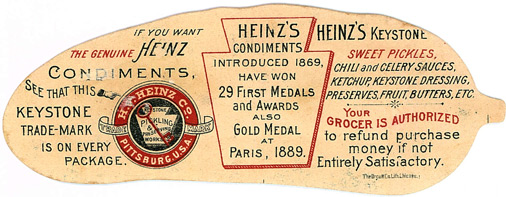By: Luke Gorman
Are transportation workers exempted from arbitration under the Federal Arbitration Act (FAA), no matter the industry they are in? In Bissonnette v. LePage Bakeries Park Street, LLC, the U.S. Supreme Court overruled a recent Second Circuit decision and found that workers delivering baked goods were exempt from arbitration under the FAA. While the decision is brief, it cold have reverberating effects on industries across the United States.
What is the Federal Arbitration act?
At almost 100 years old, the Federal Arbitration Act was passed in an effort to curb litigatio n in employment disputes in certain circumstances. At the time, the judiciary was extremely hesitant to recognize that arbitration agreements had the same authority as other parts of contracts. However, Congress saw value in settling disputes through arbitration, seeing it as more efficient and cost effective than litigation. So, to go around the judiciary, Congress passed the FAA, granting “compelled arbitration” agreements the same legal weight as other clauses in contracts.
n in employment disputes in certain circumstances. At the time, the judiciary was extremely hesitant to recognize that arbitration agreements had the same authority as other parts of contracts. However, Congress saw value in settling disputes through arbitration, seeing it as more efficient and cost effective than litigation. So, to go around the judiciary, Congress passed the FAA, granting “compelled arbitration” agreements the same legal weight as other clauses in contracts.
Despite the value of arbitration, the Act outlines certain exceptions from compelled arbitration. In particular, the act outlines the Act does not apply to “seamen, railroad employees, or any other class of workers engaged in… interstate commerce.”
what did the court say in bissonnette?
Overruling a 2023 Second Circuit decision, the U.S. Supreme Court concluded that those delivering baked goods are not required to arbitrate under the FAA. Taking a “worker centric” approach, the Court declined to look at the primary industry in which the workers found themselves and instead looked at whether the worker “played a ‘necessary role in the free flow of goods’” within interstate commerce. While recognizing that Congress has the power to expand or retract the provisions of the FAA, the Court ultimately concluded that, as written now, the FAA covers those who transport goods, no matter if they work on railroads, in our seaports, or on behalf of a bakery.
who will be affected and why?

This decision could have long lasting implications in our modern market. The American Trucking Industry revenues are projected to increase by over 50% over the next decade. This likely corresponds to our dedication to online shopping. By 2027, the e-commerce market is expected to total almost $8 trillion; valuing about one third of the U.S. GDP ($25.46 trillion). As a result, such a decision has reverberating effects on companies who make much of their money through the transportation and sale of goods throughout the United States. This could include large businesses, such as Amazon, UPS, and FedEx.
Looking beyond the mega companies, this decision has implications for small businesses as well. Small shops that hire individuals to transport goods within their local market could be required to settle employment disputes through litigation instead of arbitration. Notably, this likely depends very little on what the business does: The Court in Bissonnette noted the requirement that future conflicts hang on what the employee does rather than what the business does. And while an employee could voluntarily decide to arbitrate if a dispute arises, the guarantee of arbitration no longer exists for small business owners who hire individuals who transport goods across markets.
This ruling also has large implications when it comes to the gig economy. The IRS defines the gig economy as activities where people earn income providing on-demand work, services, or goods, often through a digital platform like an app or website. However, more generally, the gig economy refers to the recent boom in independent workers and “side hustlers” within our workforce.

From 2016 to 2022, the number of employed Americans who identify as “independent workers” increased by almost 10%. These individuals range from paid actors, to lawyers, to airBnB managers, to drivers. Some of the largest gig economy companies include Uber and Lyft as well as various food delivery services like Uber Eats. In Bloomberg, Jennifer Bennett and Khorri Atkinson warn that, if companies use arbitration agreements to protect themselves from litigating employment disputes in court, it could upend a large part of their business models.
how should you prepare for and handle future disputes?
Businesses should keep in mind the benefits and drawbacks of arbitration when a conflict arises between the business and a current or former employee. If arbitration makes sense, employers should still do everything within their power to advocate for handling disputes before a neutral arbiter.

However, when considering whether arbitration is binding on an employee, businesses must not be blinded by what the business does, but instead what the employee does in their position at the business. When an employee fills a role that is primarily transporting goods and/or services throughout a state or across states, there is a legitimate chance that they are exempt from mandatory arbitration under the FAA. When an employee fills such a role, businesses should be proactive in advocating for what they’d prefer while recognizing the fact that they likely cannot require arbitration. So, when an employee is prepared to shoulder the burdens and costs of litigation, under this new precedent, the business should be prepared to do the same.
With all of this in mind, the repercussions of this decision are likely not fully understood yet. The Supreme Court expressly declined to give their opinion on any alternative grounds in favor of arbitration. That includes an argument that the drivers weren’t engaging in interstate commerce because they delivered only within one state, as well as an argument that the drivers weren’t transportation workers to begin with. With these questions seemingly still unresolved, grey areas exist around whether certain employees who drive or otherwise travel by vehicle may avoid arbitration clauses, and businesses must tread even more cautiously when a conflict arises between the business and a transportation worker.
This post has been reproduced and updated with the author’s permission. It was originally authored on April 23, 2024 and can be found here.

Sources:
Stanley v. City of Stanford, FL, 83 F.4th 1333 (11th Cir. 2023).
Castellano v. City of New York, 142 F.3d 58 (2d Cir. 1998).
Ford v. Schering-Plough Corp., 145 F.3d 601 (3d Cir. 1998).
McKnight v. General Motors Corp., 550 F.3d 519 (6th Cir. 2008).
William D. Kennedy, et al., Where Can Your Company Be Sued? A 2022 Update on All Things Personal Jurisdiction, White and Williams, LLP (Jan. 4, 2022), https://www.whiteandwilliams.com/resources-alerts-Where-Can-Your-Company-Be-Sued-A-2022-Update-on-All-Things-Personal-Jurisdiction.
Craig Dashiell, Federal Venues May Not Be Available in Lawsuits That Members File Against Limited Liability Companies, Lowenstein Sandler: Blog (Oct. 22, 2021), https://www.lowenstein.com/news insights/publications/blogs/business-litigation/federal-venues-may-not-be-available-in-lawsuits-that-members-file-against-limited-liability-companies.
Americans with Disabilities Act, U.S. Department of Labor, https://www.dol.gov/general/topic/disability/ada (last visited Feb. 7, 2024).
Fact Sheet: Disability Discrimination, U.S. Equal Employment Opportunity Commission, https://www.eeoc.gov/laws/guidance/fact-sheet-disability-discrimination (last visited Feb. 7, 2024).
United States Census Bureau, State Population Totals and Components of Change: 2020-2023 (Dec. 18, 2023), https://www.census.gov/data/tables/time-series/demo/popest/2020s-state-total.html.
Armando A. Argueta, Why Incorporate in Delaware?, Silicon Valley Bank, https://www.svb.com/startup-insights/vc-relations/why-incorporate-in-delaware/ (last visited Feb. 7, 2024).

 An employee must meet three requirements to be considered eligible and thus, able to utilize the benefits of the FMLA.
An employee must meet three requirements to be considered eligible and thus, able to utilize the benefits of the FMLA.
 Born in Pittsburgh, PA in 1844, Henry was the oldest of eight children. Both of his parents immigrated to the U.S. from Germany and met in Pittsburgh. Henry’s father worked for brickmakers for a few years before deciding to start his own brickyard in 1850. Inspired by his father’s entrepreneurial spirit, Henry began selling the surplus vegetables from his family’s garden at the age of nine.
Born in Pittsburgh, PA in 1844, Henry was the oldest of eight children. Both of his parents immigrated to the U.S. from Germany and met in Pittsburgh. Henry’s father worked for brickmakers for a few years before deciding to start his own brickyard in 1850. Inspired by his father’s entrepreneurial spirit, Henry began selling the surplus vegetables from his family’s garden at the age of nine. At twenty-four, Henry entered into business with a wealthy friend. The company was called Heinz, Noble, & Company. In addition to horseradish, the company sold vinegar, mustard, pickles, sauerkraut, fruit preserves, catsup (early form of ketchup), and other items. Henry constantly experimented with seeds and produce to introduce new items to the company’s offerings.
At twenty-four, Henry entered into business with a wealthy friend. The company was called Heinz, Noble, & Company. In addition to horseradish, the company sold vinegar, mustard, pickles, sauerkraut, fruit preserves, catsup (early form of ketchup), and other items. Henry constantly experimented with seeds and produce to introduce new items to the company’s offerings.

 designed some of his delivery wagons to look like his famous pickles. One of his largest marketing missions took place when he bought the Ocean Pier in Atlantic City, NJ. Here, Henry offered educational exhibits, art, music, and product sampling. It is estimated that the pier had over 15,000 people a day during peak season, and Heinz’s sales jumped 30% in the first year that it owned the pier. These are just a few of the many creative ideas that Henry Heinz employed in marketing a company that has a brand as ubiquitous as any other company in America to this day.
designed some of his delivery wagons to look like his famous pickles. One of his largest marketing missions took place when he bought the Ocean Pier in Atlantic City, NJ. Here, Henry offered educational exhibits, art, music, and product sampling. It is estimated that the pier had over 15,000 people a day during peak season, and Heinz’s sales jumped 30% in the first year that it owned the pier. These are just a few of the many creative ideas that Henry Heinz employed in marketing a company that has a brand as ubiquitous as any other company in America to this day. Chandler Penn
Chandler Penn
 Although Cyrus patented the reaper in 1834, his focus was on an iron foundry the family bought. However, in 1837, an economic downturn resulted in the foundry failing. Cyrus decided to improve the reaper, and in 1844, he visited the Midwest and decided it was the future of grain growing. He built a factory in Chicago using $50,000 the mayor of Chicago contributed. His brother, Leander, managed the factory, while his brother, William, did marketing. In 1847, he sold 800 reapers compared to just two in 1841. Despite his success, Cyrus encountered a new challenge. His original patent expired in 1848, and he fought to have it renewed unsuccessfully, though fortunately, he had also patented his improvements on the original model. Cyrus was a regular patron of the Supreme Court, with many of his cases presiding before them. Typically, over allegations of patent infringement, but in his private life, he turned a dispute over an $8.70 excess luggage fee into a 23-year legal battle, where he won a rather pyrrhic victory.
Although Cyrus patented the reaper in 1834, his focus was on an iron foundry the family bought. However, in 1837, an economic downturn resulted in the foundry failing. Cyrus decided to improve the reaper, and in 1844, he visited the Midwest and decided it was the future of grain growing. He built a factory in Chicago using $50,000 the mayor of Chicago contributed. His brother, Leander, managed the factory, while his brother, William, did marketing. In 1847, he sold 800 reapers compared to just two in 1841. Despite his success, Cyrus encountered a new challenge. His original patent expired in 1848, and he fought to have it renewed unsuccessfully, though fortunately, he had also patented his improvements on the original model. Cyrus was a regular patron of the Supreme Court, with many of his cases presiding before them. Typically, over allegations of patent infringement, but in his private life, he turned a dispute over an $8.70 excess luggage fee into a 23-year legal battle, where he won a rather pyrrhic victory.



 Soldiers transitioning from active-duty service to normal life can face new challenges and uncertainty. Without the structure and hierarchical nature of military life, many veterans face decision paralysis when forging a path after their service. Veterans have various options, from enrolling in college to jumping into the business world through transition assistance programs. Many veterans find success and fulfillment after military service by becoming entrepreneurs and starting a business. The Veteran status can help build a strong brand, provide access to development and marketing tools and resources, and stand out amongst the crowd.
Soldiers transitioning from active-duty service to normal life can face new challenges and uncertainty. Without the structure and hierarchical nature of military life, many veterans face decision paralysis when forging a path after their service. Veterans have various options, from enrolling in college to jumping into the business world through transition assistance programs. Many veterans find success and fulfillment after military service by becoming entrepreneurs and starting a business. The Veteran status can help build a strong brand, provide access to development and marketing tools and resources, and stand out amongst the crowd. Veteran status bestows access to tools entrepreneurs can leverage for growth and development.
Veteran status bestows access to tools entrepreneurs can leverage for growth and development.

 One of Dickinson Law’s most esteemed alumni is businessman, Lewis Katz. Many Dickinson Law students have likely seen his name on the side entrance and portrait in the lobby of the school. For students with a keen eye, you may have even seen one generous donation of $15 million. Before his generosity, Lewis Katz was a billionaire entrepreneur.
One of Dickinson Law’s most esteemed alumni is businessman, Lewis Katz. Many Dickinson Law students have likely seen his name on the side entrance and portrait in the lobby of the school. For students with a keen eye, you may have even seen one generous donation of $15 million. Before his generosity, Lewis Katz was a billionaire entrepreneur. In 1998, Katz was a part of an investor group with his friend Ray Chambers that purchased the New Jersey Nets for $150 million. In 1999, the same investor group also signed an agreement with Yankees owner, George Steinbrenner to form YankeeNets, which owned the two teams collectively. Katz and Chambers went on to establish Puck Holdings as an affiliate of YankeeNets. Puck Holdings purchased the New Jersey Devils for $175 million in an effort to increase leverage in negotiating sports broadcasting contracts.
In 1998, Katz was a part of an investor group with his friend Ray Chambers that purchased the New Jersey Nets for $150 million. In 1999, the same investor group also signed an agreement with Yankees owner, George Steinbrenner to form YankeeNets, which owned the two teams collectively. Katz and Chambers went on to establish Puck Holdings as an affiliate of YankeeNets. Puck Holdings purchased the New Jersey Devils for $175 million in an effort to increase leverage in negotiating sports broadcasting contracts. As the former director of the Katz Foundation, Lewis Katz supported a wide range of causes aimed at helping others. Katz valued the southern New Jersey and Philadelphia area that he spent a vast portion of his life in. As an investor in these communities, he provided funding to various projects, and donated to nonprofits, including the Boys and Girls Club. Katz was also a strong believer in education. He donated millions to both his alma maters, Temple University and Penn State Dickinson Law. His generosity helped keep Dickinson Law’s campus in Carlisle, Pennsylvania, and funded Temple’s Medical School. With his Jewish background, Katz also made generous gifts to congregations and other Jewish organizations in the Philadelphia area.
As the former director of the Katz Foundation, Lewis Katz supported a wide range of causes aimed at helping others. Katz valued the southern New Jersey and Philadelphia area that he spent a vast portion of his life in. As an investor in these communities, he provided funding to various projects, and donated to nonprofits, including the Boys and Girls Club. Katz was also a strong believer in education. He donated millions to both his alma maters, Temple University and Penn State Dickinson Law. His generosity helped keep Dickinson Law’s campus in Carlisle, Pennsylvania, and funded Temple’s Medical School. With his Jewish background, Katz also made generous gifts to congregations and other Jewish organizations in the Philadelphia area.




 Businesses around the world have quickly adapted and adopted the new AI technology, experimenting in a multitude of different areas, such as finance, education, law, science, and healthcare, where they have already changed the landscape for how those industries will operate.
Businesses around the world have quickly adapted and adopted the new AI technology, experimenting in a multitude of different areas, such as finance, education, law, science, and healthcare, where they have already changed the landscape for how those industries will operate.
 e., token) into consideration, whether the dataset is just a sentence, paragraph, book, magazine article, etc.
e., token) into consideration, whether the dataset is just a sentence, paragraph, book, magazine article, etc.
 kers in humans to detect conditions such as Alzheimer’s, Parkinson’s Dementia, PTSD, and Huntington’s Disease. These vocal biomarkers have also been used to evaluate energy levels, and Axon Dao has stated this could be the future where individuals are evaluated before driving commercial trucks, cars, and/or operating large machinery.
kers in humans to detect conditions such as Alzheimer’s, Parkinson’s Dementia, PTSD, and Huntington’s Disease. These vocal biomarkers have also been used to evaluate energy levels, and Axon Dao has stated this could be the future where individuals are evaluated before driving commercial trucks, cars, and/or operating large machinery. chers comes in the form of paying individuals in a cryptocurrency on the blockchain called AXGT (Axon Dao). The distribution of coins to Axon Dao’s users ensure that individuals continue to provide medical data that is needed for further developments, and it also ensures researchers, doctors, scientists, etc., have all the data they need to make vast improvements in the healthcare industry.
chers comes in the form of paying individuals in a cryptocurrency on the blockchain called AXGT (Axon Dao). The distribution of coins to Axon Dao’s users ensure that individuals continue to provide medical data that is needed for further developments, and it also ensures researchers, doctors, scientists, etc., have all the data they need to make vast improvements in the healthcare industry. pecially when it comes to pre-symptomatic detection, early-stage detection, and early intervention in Alzheimer’s, Parkinson’s Dementia, PTSD, and Huntington’s Disease have already changed the healthcare/research industry. Companies like Axon Dao have the potential to grow large very quickly, and I believe the time is now for someone looking to start a business and/or get involved with a start-up business of this kind to not only help yourself out financially in the future, but also, to help out humanity.
pecially when it comes to pre-symptomatic detection, early-stage detection, and early intervention in Alzheimer’s, Parkinson’s Dementia, PTSD, and Huntington’s Disease have already changed the healthcare/research industry. Companies like Axon Dao have the potential to grow large very quickly, and I believe the time is now for someone looking to start a business and/or get involved with a start-up business of this kind to not only help yourself out financially in the future, but also, to help out humanity. Alec is a dedicated M&A Tax Associate at BDO, specializing in the complexities of tax law with a focus on mergers and acquisitions. Alec’s expertise is underpinned by a Certificate of Taxation from Penn State Dickinson Law. Outside of Alec’s professional life, Alec is a devoted husband and father, who cherishes every moment spent with his family. Additionally, Alec is a former Division 1 hockey player. Alec also has a passion for learning and researching the benefits decentralized AI could offer humanity.
Alec is a dedicated M&A Tax Associate at BDO, specializing in the complexities of tax law with a focus on mergers and acquisitions. Alec’s expertise is underpinned by a Certificate of Taxation from Penn State Dickinson Law. Outside of Alec’s professional life, Alec is a devoted husband and father, who cherishes every moment spent with his family. Additionally, Alec is a former Division 1 hockey player. Alec also has a passion for learning and researching the benefits decentralized AI could offer humanity. Mary Kathlyn Wagner was born in 1918 in Hot Wells, Texas. At the age of twenty-one, she became a salesperson for the Stanley Home Products company. In order to encourage people to buy the household items from the company, she would host parties. After much success with Stanley Home Products, she was hired by World Gifts in 1952. She spent roughly a decade with that company before leaving after another man (that she had trained) got promoted above her and was making a much higher salary than she was.
Mary Kathlyn Wagner was born in 1918 in Hot Wells, Texas. At the age of twenty-one, she became a salesperson for the Stanley Home Products company. In order to encourage people to buy the household items from the company, she would host parties. After much success with Stanley Home Products, she was hired by World Gifts in 1952. She spent roughly a decade with that company before leaving after another man (that she had trained) got promoted above her and was making a much higher salary than she was. At the age of forty-five after becoming disenchanted with the traditional workplace, entrepreneur Mary Kay was determined to create her own business. She started her own cosmetics company from scratch, Mary Kay Inc., in 1963 with an initial investment of $5,000. She used this initial investment to rent a small office and manufacture an initial inventory of the skin care products. She also recruited nine independent salespeople. In the 1960’s, most American bathrooms were white. Mary Kay chose the infamous pink packaging for her products so that they could be displayed on bathroom counters.
At the age of forty-five after becoming disenchanted with the traditional workplace, entrepreneur Mary Kay was determined to create her own business. She started her own cosmetics company from scratch, Mary Kay Inc., in 1963 with an initial investment of $5,000. She used this initial investment to rent a small office and manufacture an initial inventory of the skin care products. She also recruited nine independent salespeople. In the 1960’s, most American bathrooms were white. Mary Kay chose the infamous pink packaging for her products so that they could be displayed on bathroom counters. In 1968, Mary Kay purchased the first pink Cadillac. The car served as a mobile advertisement for the business. The following year, she gave her top five salespeople pink 1970 Coup de Ville cars. She had an exclusive agreement with General Motors to sell cars in the specific shade of pink only to Mary Kay. The beauty consultant winners of the cars received a company-paid, two-year lease, and then could choose to buy the cars at the end of the lease period. Mary Kay had different car incentive levels for her beauty consultants. Some beauty consultants could earn the use of a silver Chevrolet Malibu or a cash payment of $425 a month. Other beauty consultants could earn a black Chevrolet Equinox or Traverse, a Mini Cooper, or $500 a month. The top performers could choose between the pink Cadillac or $900 a month. Ford Mustangs and BMWs have been introduced as incentive options in recent years, but the pink Cadillac remains the top award for consultants whose sales exceed $100,000 in a year.
In 1968, Mary Kay purchased the first pink Cadillac. The car served as a mobile advertisement for the business. The following year, she gave her top five salespeople pink 1970 Coup de Ville cars. She had an exclusive agreement with General Motors to sell cars in the specific shade of pink only to Mary Kay. The beauty consultant winners of the cars received a company-paid, two-year lease, and then could choose to buy the cars at the end of the lease period. Mary Kay had different car incentive levels for her beauty consultants. Some beauty consultants could earn the use of a silver Chevrolet Malibu or a cash payment of $425 a month. Other beauty consultants could earn a black Chevrolet Equinox or Traverse, a Mini Cooper, or $500 a month. The top performers could choose between the pink Cadillac or $900 a month. Ford Mustangs and BMWs have been introduced as incentive options in recent years, but the pink Cadillac remains the top award for consultants whose sales exceed $100,000 in a year. Megan (Meg) Smith is a rising 3L at Penn State Dickinson Law. She has bachelor’s degrees in International Business and French and an M.B.A. with a concentration in finance. Prior to coming to law school, Meg spent nearly twenty years working for Alcoa Corp. in corporate finance and government affairs. Meg is interested in practicing corporate law. To contact Meg, please email her at mps6962@psu.edu.
Megan (Meg) Smith is a rising 3L at Penn State Dickinson Law. She has bachelor’s degrees in International Business and French and an M.B.A. with a concentration in finance. Prior to coming to law school, Meg spent nearly twenty years working for Alcoa Corp. in corporate finance and government affairs. Meg is interested in practicing corporate law. To contact Meg, please email her at mps6962@psu.edu.